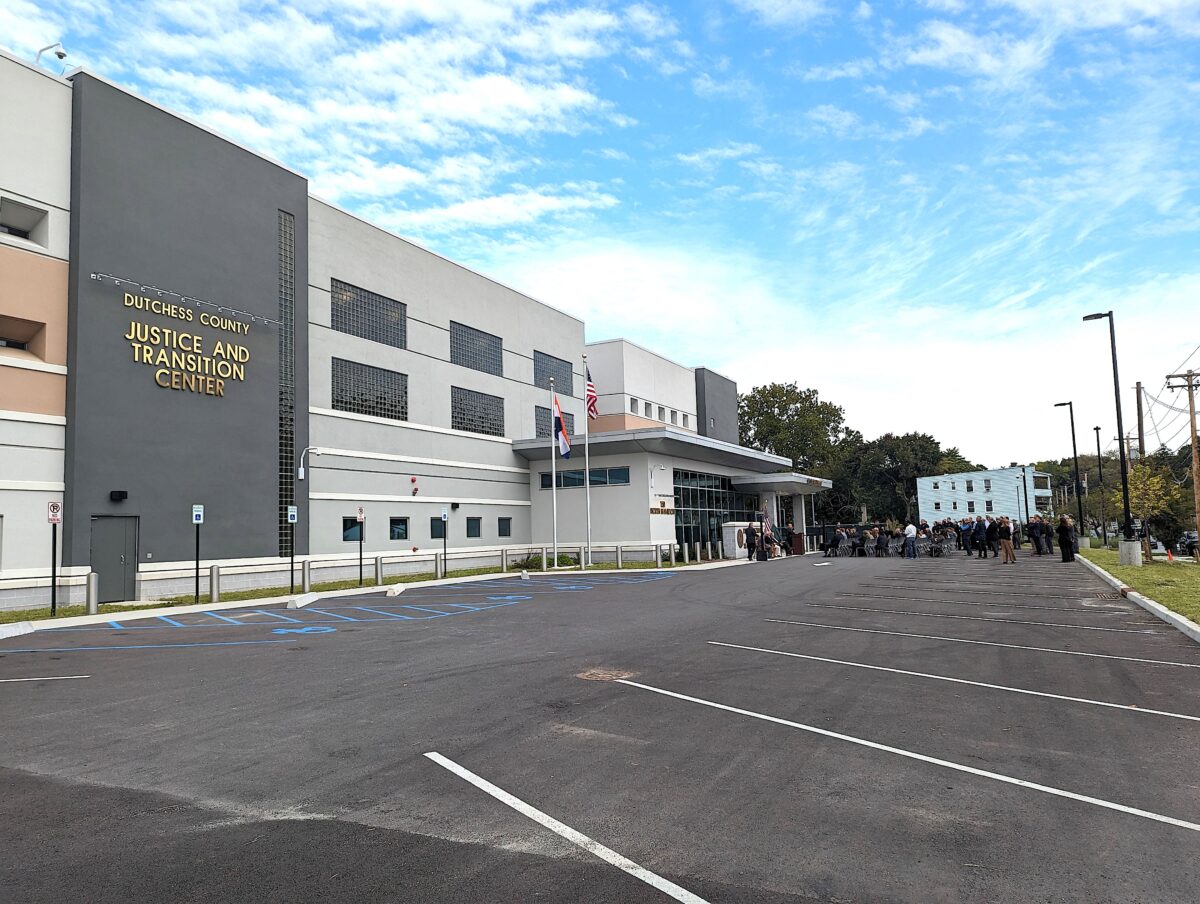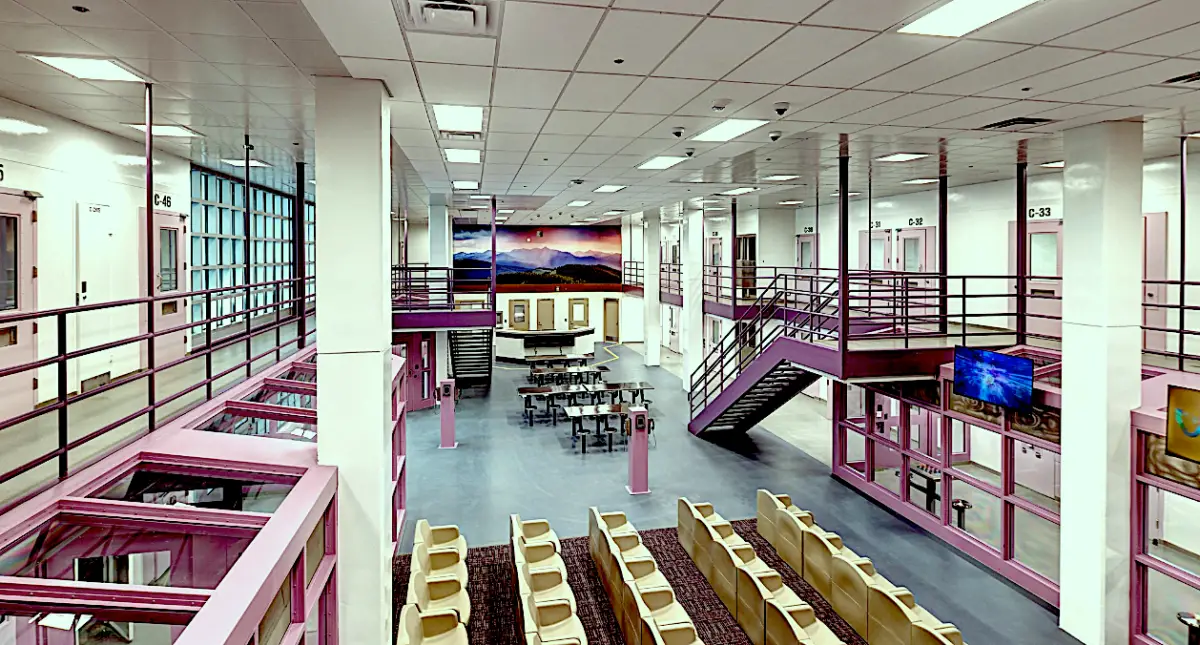A project that has been in the works for just over a decade is being readied to reach fruition with Dutchess County officials attending an event to showcase the county’s new Justice and Transition Center. The new facility on North Hamilton St. in Poughkeepsie is a replacement for the current county jail that not only increases inmate capacity but also provides enhanced facilities and programs.

The 161,987-square-foot facility features: a larger state-of the-art infirmary including a women’s medical unit with enhanced medical and mental health services; classroom and programming areas; an industrial kitchen and industrial laundry; and improved staff areas. The design allows in more natural light than at the old jail and is climate-controlled, creating a better environment for both inmates and corrections officers.
At an Oct. 10 event, Dutchess County Executive William F.X. O’Neil joined Dutchess County Sheriff Kirk Imperati and others gathered at the new facility to thank those involved in the design and construction of the complex.
“This new facility enhances the safety and dignity of both those who are incarcerated and our correctional team who work here,” Imperati said.
The old jail has 12 housing units with a separate recreational area. The new building has 328 beds in six housing units, each with its own recreational area, including one female unit.
In March 2016, the Dutchess County Legislature approved $192.2 million for the design and construction of the new facility, which at the time had been planned for a capacity of up to 569 beds. A report issued in June of this year said that as of April about $166 million had been spent on the new facility.
“Dutchess County Government has again demonstrated exceptional collaboration, multi-faceted expertise and a fierce determination to overcome challenges and implement solutions,” O’Neil said. “There are so many aspects to this project … and now we stand at the finish line, ready to open this building and serve as a statewide leader for restorative justice.”

The county said that the housing unit design in the new facility minimizes the need to move people from place to place, minimizing risk and reducing the number of required corrections officers. It said that enhanced security features, additional cameras and improved sight lines also add to the facility’s efficiency and help provide a safer, more appropriate workplace for the corrections team.

According to Dutchess County, the staffing and operational efficiencies at the new center will result in lower annual operating costs compared with the old facility. Because of overloading at the old jail, the county was forced to house some of its inmates at jails outside of Dutchess at a cost to taxpayers of about $8 million a year.
U.S. Rep. Marc Molinaro, who formerly served as Dutchess County executive, said, “The goal we set 11 years ago has been met. This new Dutchess County Justice and Transition Center will serve as a criminal justice model that helps individuals get the support and services they need to successfully return to the community.”
The project was overseen by Dutchess County Public Works Commissioner Robert Balkind and the county’s public works staff. Additionally, a transition team was appointed by Sheriff Imperati to provide input and guidance throughout the design and construction process and plan for the transition from the old jail to the new facility.
Key project contractors included: LaBella Associates, architect; Pike Construction Companies, general contractor; Turner Construction Company, construction manager; and Black Creek Integrated Systems Corporation, security system and controls contractor. Ricci Greene Associates served as Dutchess County’s owner representative throughout the project.
“This has been a lengthy project with complicated site design issues that required the project to be completed in multiple phases,” Balkind said. “It has been one of the most challenging times in history to build such a large-scale project as the construction industry has been intensely challenged by rapidly rising costs and delays due to inflation, supply chain disruptions and labor shortages.”




















